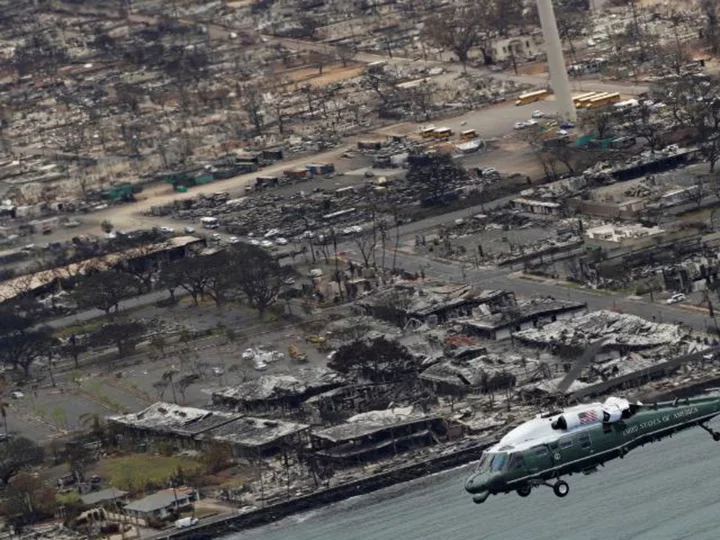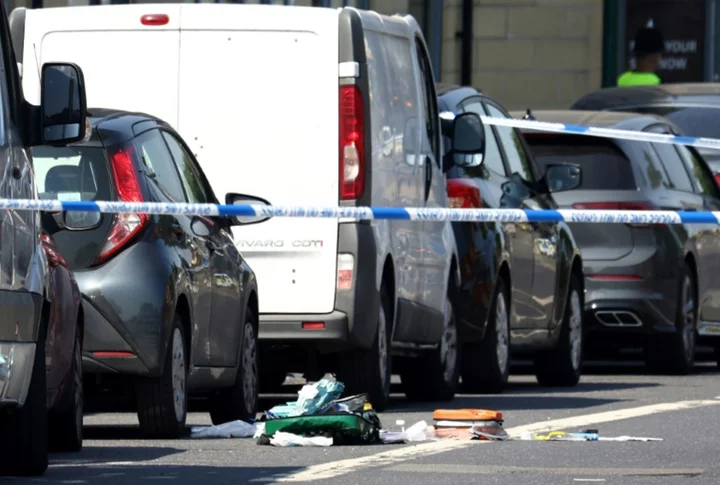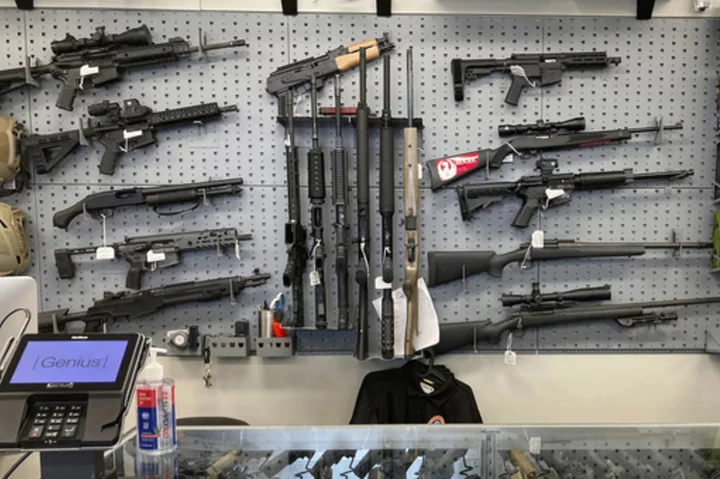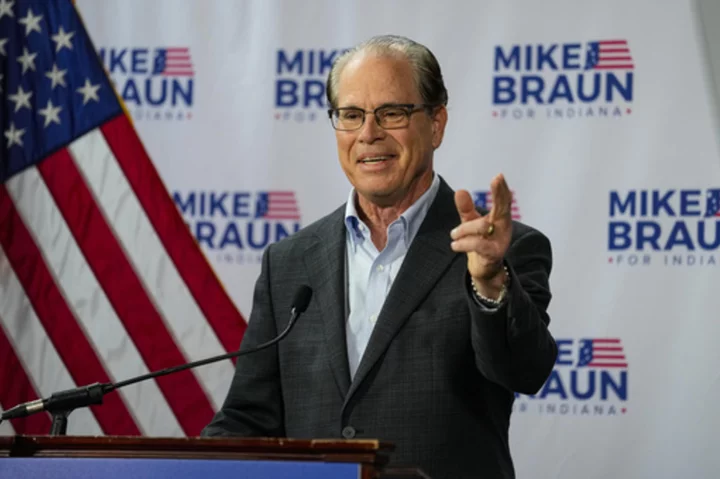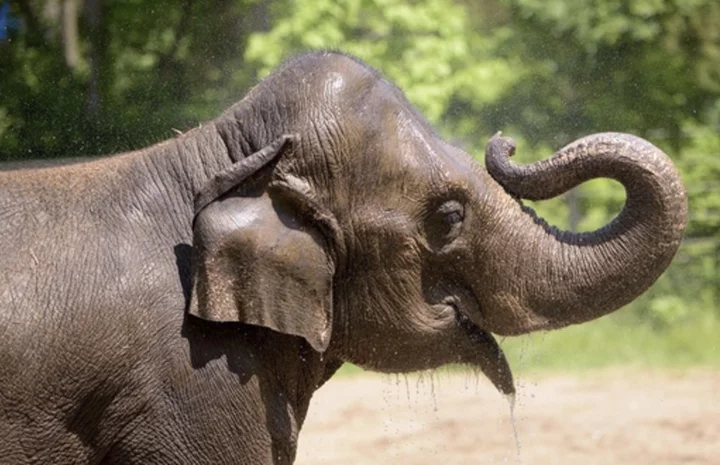Gliding over the ashen remains of Lahaina in Marine One on Monday, President Joe Biden had a question for the lawmakers who'd joined him aboard.
"What's the average age of the homes?" he asked, peering out the right side windows at the charred remains of the community below.
Taking in the totality of destruction from above has become a routine feature of the presidential visit to a scene of disaster. No other vantage can quite capture the scope of devastation.
Yet Biden came to Maui looking for more than a birds-eye view. It was the people on the ground below -- their lives now divided irreparably into before the fire and after -- who were occupying his mind on the helicopter.
Some of the homes were 50 years old, he was told, a half-decade gone in a rush of flame. Others with newer shingles and windows had survived. With hundreds of people still unaccounted for, the full scope of the losses aren't fully known.
A question Biden asks his team repeatedly, including in his office aboard Air Force One on Monday high above the Pacific, is how many people still haven't been found. He is bracing for the chance they never will be. It's the uncertainty and the waiting that is so hard, he said Monday.
"It's one thing to know, but it's quite another thing to have to wait, to wonder whether your family members are going to be okay," he said next to the blackened Banyan tree that once anchored the town square, its leaves now crispy and brown.
A yellow lab named Dexter, panting patiently under a tent nearby, provided perhaps the most visible indication that the grim work wasn't over. Duct taped to his feet were four red boots, protecting them from the blanket of ash and debris he'd been searching through for human remains.
Bearing witness to unimaginable tragedy is the grim task of any president -- no matter their natural capacity for empathy. The storms, fires, shootings and building collapses that punctuate the nation's history are inevitably a personal tragedy for whoever is sitting in the Oval Office.
They are as much a test of executive leadership as they are a gauge of humanity. Presidents are asked to translate grief and sometimes anger into reassuring words and actionable steps, even when the pain is fresh and the answers are hard.
Nowhere has that been more true than on Maui, where a serious reckoning is now underway over what precipitated the historic level of destruction, and whether it could have been avoided. Those are questions White House officials are asking as well.
"He always asks why. We all ask why," Biden's Homeland Security adviser Liz Sherwood-Randall said Monday.
Biden wasn't necessarily looking backwards when he met with rescue workers and state officials, the smell of char still hanging in the air. Walking along burnt out Front Street, an area once lined with ice cream parlors and T-shirt shops, the matter at hand was the recovery.
"They've been offered everything -- even an aircraft carrier," one military official told Biden as they stood in front of a former storefront -- a battered air conditioner unit being the only thing recognizable in the pile of twisted metal.
Yet beneath the praise and vows to provide Maui "whatever" it needs, are the difficult questions about how it happened in the first place. The absence of any warning sirens, an invasion of non-native plants on private land and malfunctioning electric grids have all emerged as potential factors that allowed the fire to become the deadliest in more than a century.
As Biden proceeded along Front Street, Federal Emergency Management Agency Administrator Deanne Criswell explained they were tracing the path the town's residents used to flee from the encroaching inferno. The portrait of horror was difficult to reconcile with the tranquil blue Pacific splashing only a block away. Many residents fled directly into the water.
On Maui, questions about what happened are paired with deep skepticism over what comes next: how the community will rebuild and whether land will be snatched up by wealthy developers.
Even as he vowed any rebuilding would be done "the way you want it to be done," Biden can't have missed the pockets of animosity that greeted him as he traveled around the westward side of Maui.
From his armored SUV, he may have seen the middle finger interspersed with locals flashing the friendlier "hang loose" greeting. Handmade signs pleaded for local control over how the community rebuilds: "Defend Maui/Protect our Aina," one sign read, using the Hawaiian word for land.
As he returned to the airport after spending more than an hour greeting community members inside a gymnasium, a man on the roadside held a sign saying only "No comment" -- perhaps a nod to the words Biden uttered two weekends ago when asked about the mounting death toll after returning from the beach. The White House said afterward he hadn't heard the question.
For Biden, compassion has been a political calling card. It was that reputation which seemed so at odds with how he responded to the unheard question last week, a dissonance Republicans quickly seized upon.
White House officials fiercely reject the implication Biden's response was somehow lacking, and have noted it took him only 63 minutes for the president to approve Hawaii Gov. Josh Green's request for disaster assistance -- a record made possible by earlier efforts in the White House to cut down on red tape.
Still, Monday's trip was another opportunity to dispel the backlash. Biden sought to connect to Maui's residents by extensively recounting his own experiences with loss, including the Christmastime car crash in 1972 that took the life of his daughter and wife.
He made reference to the tragedy at multiple points Monday, including at his speech next to the Banyan tree and later inside a gymnasium where community members had gathered.
Wearing a green and yellow lei, he also recounted an electrical fire that caused smoke at his home in Delaware -- a relatively minor incident compared to the devastation on display in Maui.
In the past, that type of personal interjection has been either embraced or rejected by those Biden is trying to console. Some have found it reassuring to hear how he emerged from such deep loss. Others have said it was jarring to hear Biden talk extensively about his own tragedies during their moment of grief.
Whichever the view Monday -- and certainly Biden's visit was met by a spectrum of opinions -- the task before him remains unfinished.
"He's experienced a lot of personal tragedy himself, and I think he feels it in his gut whenever people lose family," said Sen. Brian Schatz, the Hawaii Democrat, who accompanied Biden aboard Marine One and on the ground in Lahaina. "That was his first job, was to connect that an emotional level, then to reiterate that he understands the magnitude of this crisis, and that this is not the kind of thing that we can get through in a couple of weeks or even a couple of months."

